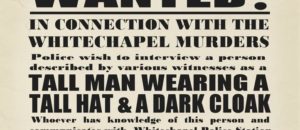Richard Trenton Chase – Sacramento, California
Richard Trenton Chase
Richard Trenton Chase was an American serial killer active in Sacramento in 1977, known for a series of violent murders that involved mutilation and cannibalism. He was diagnosed with paranoid schizophrenia and later died while in custody.
Key Facts
- Richard Trenton Chase was convicted of six murders committed in Sacramento, California, in 1977.
- He became widely known in the press as the “Vampire of Sacramento.”
- Chase was arrested in December 1977 following an investigation that linked him to multiple crime scenes.
- He was tried and convicted of multiple counts of murder and was sentenced to death in 1979.
- While awaiting execution, Chase died by suicide in custody in 1980.
- Investigators reported evidence of mutilation and cannibalism among the offenses attributed to him.
- His crimes occurred during a concentrated period in 1977 and involved victims of different ages and sexes.
- Authorities found extensive forensic evidence in his residence that helped secure his arrest and prosecution.
- Chase had a documented history of severe mental illness, including a diagnosis of paranoid schizophrenia.
- Earlier in life he exhibited animal cruelty and other troubling behaviors that drew attention from family and clinicians.
Crimes and Victims
In 1977 a series of homicides in Sacramento was linked to a single perpetrator whose actions included severe mutilation and cannibalism. The victims included adults and children, and the crimes attracted intense local attention because of their brutality and apparent randomness.
Law enforcement found physical evidence tying the crimes to one residence and to the person who lived there. The pattern of violence and the condition of some victims led investigators to classify the cases as among the more disturbing in the jurisdiction’s history.
Capture and Trial
Chase was arrested in December 1977 after investigators connected physical evidence from the crime scenes to his home. Authorities reported extensive biological material and other indicators that played a central role in the case against him.
At trial, the defense raised mental illness as a key issue, but a jury ultimately convicted him of multiple counts of murder and imposed a death sentence in 1979. While awaiting execution in a state facility, Chase died by suicide in 1980.
Psychology and Motives
Psychiatrists who evaluated Chase diagnosed him with paranoid schizophrenia and documented delusional thinking and profound disturbances in perception and behavior. These clinical findings factored into debates at trial and in post-arrest evaluations about criminal responsibility and risk.
Descriptions of his actions and statements suggested deeply distorted beliefs about his physical condition and unusual compulsions that contributed to the violence. Experts and commentators have noted that his case illustrates the complex intersection of severe mental illness, substance use, and violent behavior.
Background / Early Life
Accounts of Chase’s early life include reports of troubling behavior in childhood, such as cruelty to animals and social withdrawal, which later observers identified as early warning signs. He had a history of psychiatric treatment before the 1977 killings and had experienced periods of institutionalization.
Family members and some clinicians reported that he had been treated for mood and thought disturbances and had used various substances at times. Those prior episodes of illness and contact with mental health services were focal points in later examinations of how the case unfolded.
Legacy and Media Coverage
The case of Richard Trenton Chase received widespread media coverage and has been the subject of true-crime books, documentaries, and news retrospectives. The sensational aspects of the crimes and the “Vampire” sobriquet intensified public interest and ongoing coverage.
Beyond media attention, the case prompted discussion about psychiatric care, community risk management, and the challenges of treating severe mental illness. It remains cited in debates over forensic psychiatry, the adequacy of outpatient treatment and discharge decisions, and how authorities balance public safety with patient rights.













